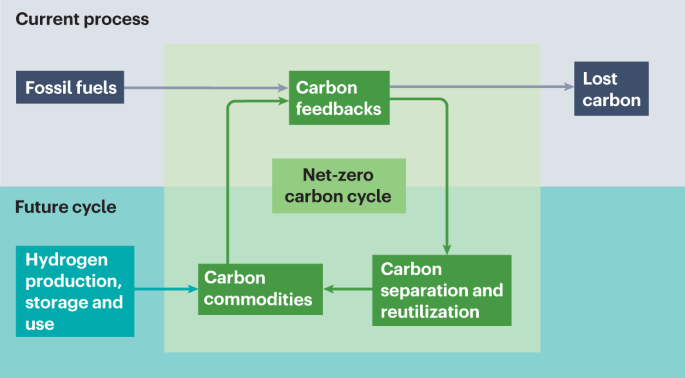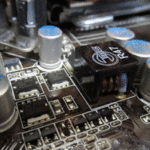2024-05-01 パデュー大学
<関連情報>
- https://www.purdue.edu/newsroom/releases/2024/Q2/studies-assess-feasibility-of-aquaculture-wastewater-treatment-methods.html
- https://www.sciencedirect.com/science/article/abs/pii/S0960852424002815
- https://www.sciencedirect.com/science/article/abs/pii/S0013935124003517
- https://www.sciencedirect.com/science/article/abs/pii/S0269749124001829
- https://www.sciencedirect.com/science/article/abs/pii/S0269749123008667
エビの再循環養殖システムにおける微細藻類ベースの廃水処理の環境的実現可能性に関するライフサイクルアセスメント Life cycle assessment on environmental feasibility of microalgae-based wastewater treatment for shrimp recirculating aquaculture systems
April J. Arbour, Pankaj Bhatt, Halis Simsek, Paul B. Brown Jen-Yi Huang
Bioresource Technology Available online:11 March 2024
DOI:https://doi.org/10.1016/j.biortech.2024.130578
Highlights
- Microalgae treatment accounted for less than 10% of total environmental impacts.
- Microalgae treatment was effective in reducing system’s MEP and FEP but not GWP.
- Environmental impacts were sensitive to approach to solving multifunctionality.
- Utilizing algal biomass for biogas production reduced system’s MEP.
- Replacing coal with renewables in electricity mix reduced 90–99% of total impacts.
Abstract
This life cycle assessment (LCA) study analyzed the environmental consequences of integrating microalgae-based wastewater treatment into a shrimp farm with recirculating aquaculture systems (RAS). Microalgae treatment produced <10 % of the system’s freshwater eutrophication potential (FEP), marine eutrophication potential (MEP) and global warming potential, which was dominantly contributed by electricity use. Microalgae treatment performed comparably to activated sludge treatment for FEP reduction, and was more effective in remediating marine eutrophication. Replacing coal in electricity mix, particularly with renewables, reduced the system’s impacts by up to 90–99 %. Performing the LCA based on system expansion generally obtained higher impacts compared to allocation. Utilizing algal biomass for biogas production reduced the MEP; however, production of feed ingredient and biodiesel were not environmentally beneficial. This study proved the use of microalgae for aquaculture wastewater treatment to be environmentally feasible, the results can guide more sustainable RAS operations and design of full-scale microalgae treatment.
Graphical abstract

エビ廃水処理における藻類と土着バクテリアのコンソーシアム: 持続可能な養殖システムにおける資源回収のための研究 Algae and indigenous bacteria consortium in treatment of shrimp wastewater: A study for resource recovery in sustainable aquaculture system
Pankaj Bhatt, Paul B. Brown, Jen-Yi Huang, Aya S. Hussain, Henry T. Liu, Halis Simsek
Environmental Research Available online:9 February 2024
DOI:https://doi.org/10.1016/j.envres.2024.118447
Highlights
- Shrimp wastewater contains high levels of nitrogen and phosphate.
- Algae-bacteria consortium is a feasible solution for a sustainable environment.
- TDN and DON decreased (>90%) in the presence of algae-bacteria consortium.
- Symbiotic relationship between algae and bacteria increased treatment performance.
- Nutrients in wastewater are converted to biomass during the treatment.
Abstract
Shrimp production facilities produce large quantities of wastewater, which consists of organic and inorganic pollutants. High concentrations of these pollutants in shrimp wastewater cause serious environmental problems and, therefore, a method of treating this wastewater is an important research topic. This study investigated the impact of algae and indigenous bacteria on treating shrimp wastewater. A total of four different microalgae cultures, including Chlorococcum minutus, Porphyridum cruentum, Chlorella vulgaris and Chlorella reinhardtii along with two cyanobacterial cultures, Microcystis aeruginosa and Fishcherella muscicola were used with indigenous bacterial cultures to treat shrimp wastewater. The highest soluble chemical oxygen demand (sCOD) removal rate (95%) was observed in the samples that were incubated using F. muscicola. Total dissolved nitrogen was degraded >90% in the C. vulgaris, M. aeruginosa, and C. reinhardtii seeded samples. Dissolved organic nitrogen removal was significantly higher for C. vulgaris (93%) as compared to other treatments. Similarly, phosphate degradation was very successful for all the algae-bacteria consortium (>99%). Moreover, the degradation kinetics were calculated, and the lowest half-life (t1/2) for sCOD (5 days) was recorded for the samples seeded with M. aeruginosa. Similarly, treatment with F. muscicola and C. reinhardtii showed the lowest t1/2 of NH3–N (2.9 days) and phosphate (2.7 days) values. Overall, the results from this study suggest that the symbiotic relationship between indigenous bacteria and algae significantly enhanced the process of shrimp wastewater treatment within 21 days of incubation. The outcome of this study supports resource recovery in the aquaculture sector and could be beneficial to treat a large-scale shrimp facility’s wastewater worldwide.
Graphical abstract

養殖排水中の溶存物質の生分解性と生物学的利用能: 常在細菌、シアノバクテリア、緑色微細藻類のパフォーマンス Biodegradability and bioavailability of dissolved substances in aquaculture effluent: Performance of indigenous bacteria, cyanobacteria, and green microalgae
Yolanys Aranda-Vega, Pankaj Bhatt, Jen-Yi Huang, Paul Brown, Aparajita Bhasin, Aya S. Hussain, Halis Simsek
Environmental Pollution Available online:30 January 2024
DOI:https://doi.org/10.1016/j.envpol.2024.123468
Highlights
- Microalgae-cyanobacteria treat fish culture wastewater treatment effectively.
- Successful reduction of biodegradable dissolved organic nitrogen in fish wastewater.
- Using microalgae-cyanobacteria reduces the cost of treatment in fish wastewater.
- Inorganic nitrogen removal rate was the highest in M. aeruginosa seeded samples.
Abstract
Aquaculture is a controlled aquatic farming sector and one of the most important human food sources. Fish farming is one of the predominant, fast-growing sectors that supply seafood products worldwide. Along with its benefits, aquaculture practices can discharge large quantities of nutrients into the environment through non-treated or poorly treated wastewater. This study aims to understand the nutrient composition of fish wastewater and the use of indigenous bacteria, cyanobacteria, and microalgae as an alternative biological treatment method. Wastewater samples from a local fish farming facility were collected and treated using six different species of cyanobacteria and microalgae include Chroococcus minutus, Porphyridium cruentum, Chlorella vulgaris, Microcystis aeruginosa, Chlamydomonas reinhardtii, and Fischerella muscicola. All the samples were incubated for 21 days, and the following parameters were measured weekly: Chemical oxygen demand (COD), phosphate, total dissolved nitrogen, and dissolved inorganic nitrogen. In addition, dissolved organic nitrogen (DON), bioavailable DON (ABDON), and biodegradable DON (BDON) were calculated from the mass-balance equations. Colorimetric and digestive methods were used for the parameter measurements. The results showed that C. reinhardtii reduced the soluble COD concentration by 74.6 %, DON by 94.3 %, and phosphorous by more than 99 %. Moreover, M. aeruginosa, and C. minutus significantly reduced inorganic nitrogen species (>99 %). This alternative fish wastewater treatment method was explored to gain insight into fish wastewater nutrient composition and to create a sustainable alternative to conventional fish wastewater treatment methods.
Graphical abstract

養殖廃水の電気化学的処理と応答曲面法を用いたパラメータの最適化 Electrochemical treatment of aquaculture wastewater effluent and optimization of the parameters using response surface methodology
Pankaj Bhatt, Jen-Yi Huang, Paul Brown, Karthik B. Shivaram, Elif Yakamercan, Halis Simsek
Environmental Pollution Available online:22 May 2023
DOI:https://doi.org/10.1016/j.envpol.2023.121864
Highlights
- Shrimp metabolism contaminates the surrounding water system.
- Shrimp wastewater contains a considerable amount of nitrogen and phosphate.
- Electrochemical processes are effective to treat shrimp wastewater effluent.
- Optimized parameters are effective for resource recovery of aquaculture effluent.
Abstract
The electrocoagulation (EC) and electrooxidation (EO) processes are employed widely as treatment processes for industrial, agricultural, and domestic wastewater. In the present study, EC, EO, and a combination of EC + EO were evaluated as methods of removing pollutants from shrimp aquaculture wastewater. Process parameters for electrochemical processes, including current density, pH, and operation time were studied, and response surface methodology was employed to determine the optimum condition for the treatment. The effectiveness of the combined EC + EO process was assessed by measuring the reduction of targeted pollutants, including dissolved inorganic nitrogen species, total dissolved nitrogen (TDN), phosphate, and soluble chemical oxygen demand (sCOD). Using EC + EO process, more than 87% reduction was achieved for inorganic nitrogen, TDN, and phosphate, while 76.2% reduction was achieved for sCOD. These results demonstrated that the combined EC + EO process provided better treatment performance in removing the pollutants from shrimp wastewater. The kinetic results suggested that the effects of pH, current density, and operation time were significant on the degradation process when using iron and aluminum electrodes. Comparatively, iron electrodes were effective at reducing the half-life (t1/2) of each of the pollutants in the samples. The application of the optimized process parameters on shrimp wastewater could be used for large-scale treatment in aquaculture.
Graphical abstract




